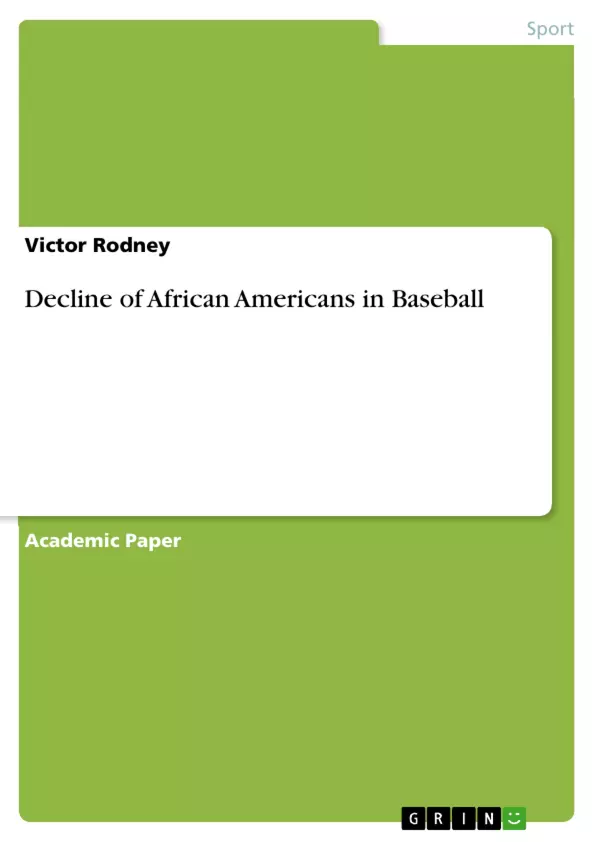In American sports, Baseball seems to be affected by the decrease in the number of African-American players. The baseball is a game that has been appreciated by many across America and beyond. Having the Africans out of the game is worrying issues since this might be taken as racial discrimination. This decline was started being a notice in the 70s through 80s and the issue seems to worsen in the nineties. In the past years, the number of African Americans was always highest. The number of African American players records a decline of eighteen percent an issue some researchers are working hard to hide and give a false number of 26 percentages.
The decline happened after the celebration of Jackie Robinson win, which was celebrated by many. By this time, Latinos were not too much involved in sports. As the time went by, the Latinos started increasing and showing they are interested in sports while the number of African Americans declined. Up to now, there is no research that is able to explain clearly the reason for the decline. In this paper, I will argue the possible ways that led to the decline of African American and how it can be revived.
Inhaltsverzeichnis (Table of Contents)
- Introduction/Background
- Wealth and population size
- Community and family support
- Racism
- Solution to the remedy
Zielsetzung und Themenschwerpunkte (Objectives and Key Themes)
This paper examines the decline of African American participation in baseball, exploring the possible causes and potential solutions. The author aims to shed light on the factors contributing to this decline and suggest ways to revive African American involvement in the sport.
- The impact of wealth and population size on African American representation in baseball
- The role of community and family support in shaping participation in baseball
- The influence of racial biases and discrimination in the sport
- The importance of school initiatives and opportunities for fostering baseball interest
- The comparison of African American participation in baseball versus football
Zusammenfassung der Kapitel (Chapter Summaries)
- Introduction/Background: This section provides a background on the decline of African American players in baseball, noting its emergence in the 1970s and 1980s and worsening in the 1990s. The author highlights the lack of definitive research on the reasons behind this decline and sets the stage for examining potential explanations.
- Wealth and population size: This chapter explores the possible role of wealth disparities and population demographics in the decline. The author argues that while Latinos are increasingly represented in baseball, their population size is similar to African Americans. The author suggests that economic factors, including the cost of participating in baseball, may disadvantage African Americans.
- Community and family support: This chapter focuses on the importance of community and family involvement in fostering baseball participation. The author argues that the lack of financial support and resources within African American communities may hinder opportunities for young players. The author also discusses the potential impact of family dynamics, such as divorce rates, on African American involvement in baseball.
- Racism: This section delves into the possible role of racial biases and discrimination in the decline of African American baseball players. The author suggests that while researchers may downplay the role of racism, there is evidence of preferential treatment towards white players, potentially limiting opportunities for African Americans.
Schlüsselwörter (Keywords)
This preview primarily focuses on the decline of African American participation in baseball. Key concepts include wealth disparities, community and family support, racial biases, school initiatives, and comparative analysis of baseball versus football participation.
- Quote paper
- Victor Rodney (Author), 2018, Decline of African Americans in Baseball, Munich, GRIN Verlag, https://www.grin.com/document/421540



